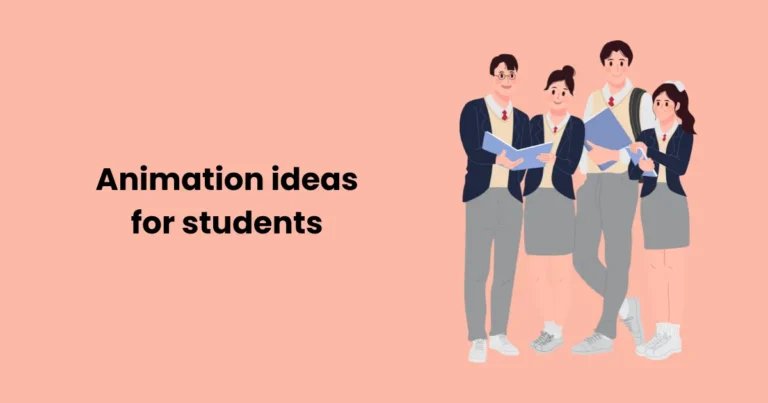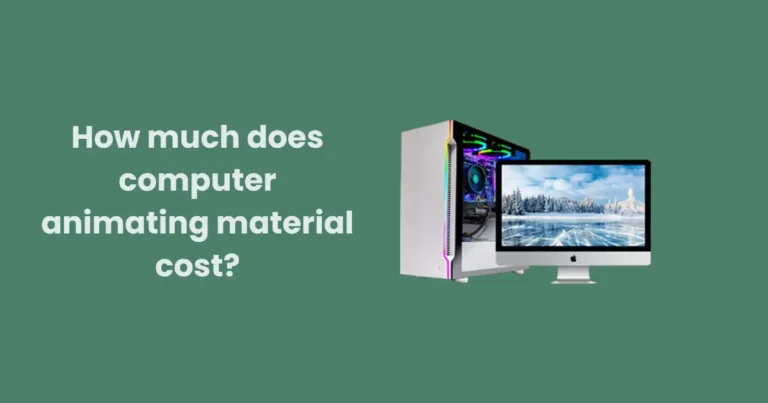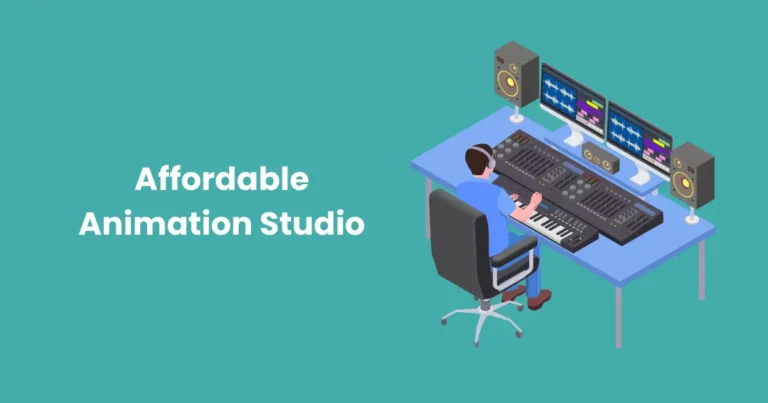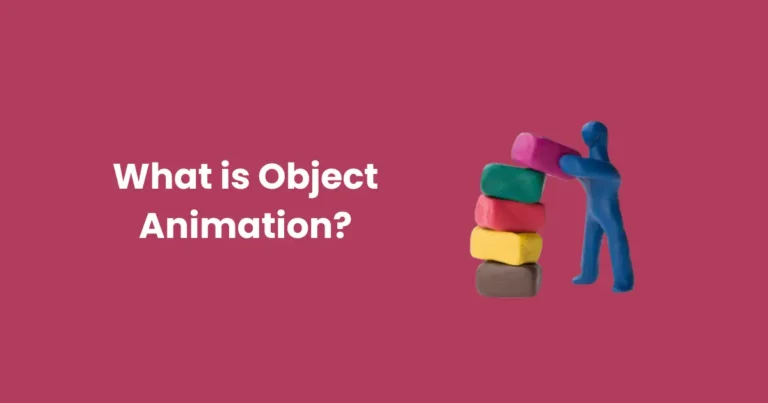How much does animation cost per minute | best freelance Pricing guide for 2025
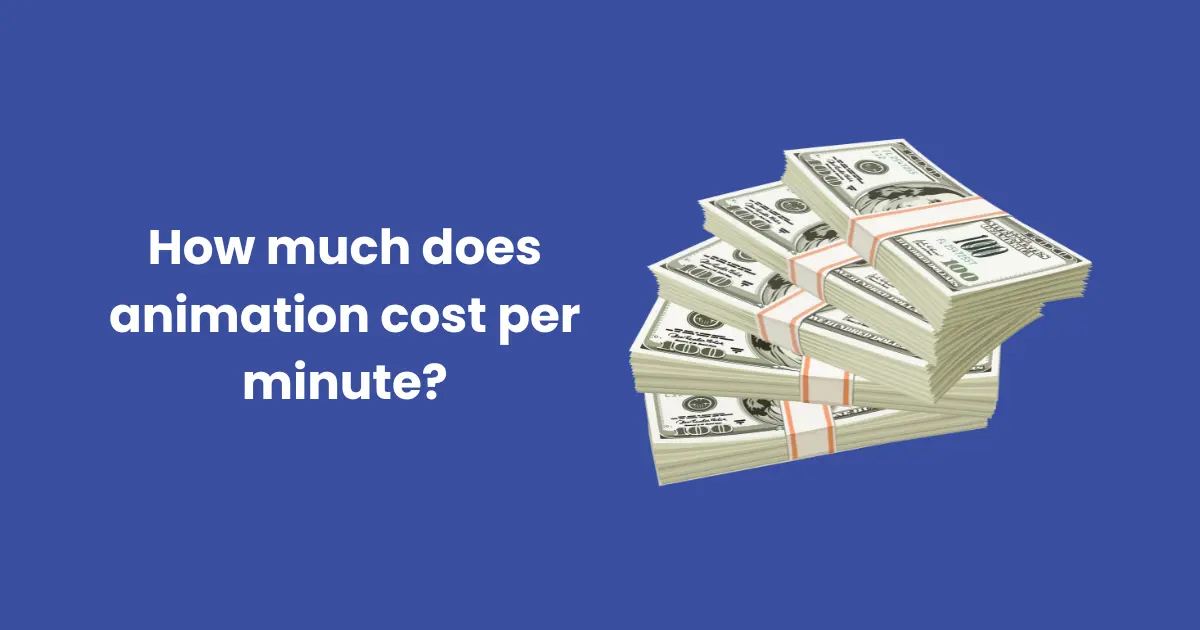
Contents
If you’re looking to create a high-quality animated video and are considering hiring a freelancer, one of the first questions that come to mind is: “How much does animation cost per minute?” The truth is, that the price of freelance animation can vary significantly based on a range of factors, such as the type of animation, the complexity of the project, the experience of the animator, and the project deadline.
Whether you’re working on a simple 2D animation, a detailed 3D animation, or a stop-motion project, understanding the freelance animation cost per minute is crucial for planning your budget and ensuring you get the best value for your investment. In this article, we’ll break down the factors that influence pricing and provide you with a clearer idea of what to expect when hiring a freelance animator for a 1-minute video.
Factors Influencing Freelance Animation cost per minute
When considering freelance Animation cost per minute video, several key factors influence the final price. Understanding these elements will help you gauge the potential cost and make informed decisions about your project. Here are the primary factors that determine the cost of freelance animation:
1. Type of Animation
The style of animation you choose is one of the most significant factors affecting the cost. Different animation types require varying levels of effort, resources, and expertise.
- 2D Animation: This is typically the most affordable option, especially when compared to 3D animation or stop-motion. 2D animation involves creating two-dimensional characters and backgrounds, often using vector graphics or traditional frame-by-frame techniques. The simpler the style, the lower the cost will be.
- 3D Animation: 3D animation involves creating three-dimensional models, environments, and characters. It’s more intricate and requires specialized software, meaning it generally costs more than 2D animation. Additionally, it often involves more time and skill to render realistic details, making it a more expensive option for a 1-minute video.
- Stop-Motion Animation: This traditional form of animation uses physical objects and puppets, photographing each frame one by one. Because it is time-consuming and requires specialized equipment and setup, stop-motion animation tends to be the most expensive option for a 1-minute video.
2. animation cost per minute for complex projects
The complexity of the animation directly influences its cost. Simple animations with basic elements will naturally be cheaper than more detailed and intricate ones. Complexity factors include:
- Character Design: More detailed characters with unique features or complex movements increase production time and costs.
- Backgrounds and Environments: Intricate and highly detailed backgrounds add considerable time to the animation process.
- Special Effects: If your animation requires special effects, lighting adjustments, or advanced techniques like particle effects or simulation (e.g., smoke, fire, rain), this can significantly raise the cost.
A simpler, minimalist animation will likely cost less than one with complex characters, detailed backgrounds, and high-quality effects.
3. Experience of the Animator
The experience level of the animator is another crucial factor in determining the cost of your project. Highly experienced animators, especially those with a portfolio of high-end projects, tend to charge more for their services. They bring expertise, faster turnaround times, and superior animation quality.
- Beginner Animators: New freelancers or less experienced animators may offer more affordable rates, but their work may take longer and might not meet the same quality standards as more seasoned professionals.
- Experienced Animators: Animators with a proven track record in the industry will charge a premium for their work. They are more likely to deliver high-quality animations and meet tight deadlines, making them ideal for complex or high-stakes projects.
4. Project Deadline
The timeline of your project can also affect the animation cost per minute. If you have a tight deadline and need the 1-minute animation completed quickly, you may need to pay an additional fee for expedited work. Freelancers often adjust their rates based on the urgency of the project.
- Standard Deadline: If the project timeline is flexible or typical (e.g., 1-2 weeks), the cost will generally be within the average range.
- Rushed Deadline: If the project requires an animator to prioritize your work, they may charge a rush fee to compensate for the additional time and effort needed to meet the deadline.
It’s important to clearly communicate your timeline and allow the animator sufficient time to complete the project without compromising quality.
Average Freelance Animation Rates
The cost of freelance animation can vary greatly depending on the style, complexity, and animator’s experience. Below, we outline the average rates for different types of animation, helping you understand the typical pricing you might encounter when hiring a freelance animator for a 1-minute animation.

1. Freelance 2D Animation Costs
2D animation is often the most affordable option, especially for simple motion graphics, character animations, or explainer videos. However, the animation cost per minute can increase with complexity, such as detailed character designs or custom illustrations.
- Basic 2D Animation: For straightforward 2D animations with minimal character movement or basic designs, you can expect to pay between $500 and $1,500 for 1 minute of animation. This type of animation typically involves simple shapes, text, or minimal character animation.
- Intermediate 2D Animation: More involved animations, including custom character designs, smooth transitions, and some special effects, can range between $1,500 and $3,000 for 1 minute. These projects require more time and attention to detail.
- High-end 2D Animation: For highly detailed, custom 2D animations with complex characters, backgrounds, and special effects, the cost can range between $3,000 and $5,000 for a 1-minute video. High-end projects typically require skilled animators and longer production times.
2. Freelance 3D Animation Costs
3D animation requires more technical expertise and specialized software, making it significantly more expensive than 2D animation. The cost also increases based on the level of detail and realism in the animation.
- Basic 3D Animation: For simple 3D animations, such as basic shapes, product renders, or character animations with limited movement, you can expect to pay between $2,000 and $5,000 for 1 minute of animation.
- Intermediate 3D Animation: More complex animations, including detailed character models, sophisticated camera movements, and realistic textures, will cost between $5,000 and $10,000 for 1 minute.
- Advanced 3D Animation: Highly realistic or cinematic 3D animations, complete with advanced character rigging, lighting, rendering, and special effects, can range from $10,000 to $15,000 or more for 1 minute of animation. These projects require a team of skilled animators, designers, and render experts.
3. Stop-Motion Animation Costs
Stop-motion animation is one of the most time-consuming and labor-intensive forms of animation, as it involves photographing physical objects or puppets frame by frame. Because of this, stop-motion animation is typically the most expensive for a 1-minute video.
- Basic Stop-Motion Animation: For simple stop-motion animation using basic sets and characters, expect to pay between $5,000 and $8,000 for 1 minute of footage. This type of project usually involves simpler scenes and fewer characters.
- Intermediate Stop-Motion Animation: More detailed stop-motion projects, with intricate sets, multiple characters, and advanced techniques like puppet rigs or props, can range between $8,000 and $15,000 for 1 minute.
- High-end Stop-Motion Animation: For highly detailed, cinematic stop-motion videos that involve complex setups, props, and fine-tuned movements, the cost can exceed $15,000, sometimes reaching up to $20,000 or more.
Additional Factors Impacting Rates
Aside from animation style and complexity, other factors can impact rates:
- Voiceover: If you need voiceover work, it can add between $100 and $1,000, depending on the talent and script length.
- Music and Sound Effects: If you require custom music, sound effects, or a licensed soundtrack, this can add another $500 to $2,000 to the overall cost.
- Revisions: Revisions typically come at an additional cost. Freelancers may include a set number of revisions in the initial quote, but extra changes beyond that can incur hourly charges, often ranging from $50 to $150 per hour.
How to Estimate Animation cost per minute
Estimating the animation cost per minute can be a bit tricky, as various factors come into play. However, by understanding the general pricing structure and considering key elements that influence the final price, you can better plan your budget. Here’s a step-by-step guide to help you estimate the cost of your animation project:

1. Hourly vs. Flat Rate
Freelance animators typically charge either on an hourly basis or at a flat rate for a project. Understanding these pricing structures is crucial to estimating the overall cost.
- Hourly Rate: Many animators charge based on the time they spend on the project. Hourly rates for animation range from $25 to $150 per hour, depending on the animator’s experience and the complexity of the work. For a 1-minute animation, it can take anywhere from 20 to 80 hours (or more) to complete, depending on the type of animation and its complexity.
- For instance, a simple 2D animation might take 20 to 40 hours, whereas a more detailed 3D animation or stop-motion project could take much longer.
- To estimate the cost, multiply the estimated hours by the hourly rate. For example, if the hourly rate is $50 and the project takes 40 hours, the cost would be $2,000.
- Flat Rate: Alternatively, some animators offer a flat rate for a specific project, which can help simplify budgeting. A flat rate usually includes a set price for the entire animation, regardless of how many hours are spent working on it. The flat rate may cover various stages of production, such as concept design, storyboarding, animation, and revisions.
- For a 1-minute animation, flat rates are typically in the range of $500 to $15,000, depending on the type and complexity of the animation, as discussed earlier.
2. Determine the Type of Animation
The type of animation you choose significantly impacts the final cost, as each style requires different levels of time, skill, and software. Here’s a breakdown of how different animation styles affect the animation cost per minute:
- 2D Animation: This is typically the most affordable option. For a basic 1-minute 2D animation, you can expect to pay between $500 to $5,000. However, if your animation requires custom designs, detailed character work, or special effects, this can go up.
- 3D Animation: 3D animation usually costs more due to the additional time required for modeling, texturing, and rendering. A 1-minute 3D animation can range between $2,000 to $15,000, depending on the quality and complexity of the animation.
- Stop-Motion Animation: Stop-motion requires a significant amount of time for each frame to be captured, making it the most expensive form of animation. A 1-minute stop-motion animation could cost between $5,000 and $20,000, depending on the complexity of the sets, characters, and props used.
3. Consider the Level of Detail and Complexity
The more complex your animation, the higher the cost will be. Consider the following factors:
- Character Design: Custom-designed characters or detailed animation (e.g., facial expressions, complex movements) can add substantial time and cost to your project.
- Backgrounds and Environments: Detailed backgrounds and environments can increase the production time. Simple backgrounds, such as solid color or minimalistic designs, are less expensive than fully illustrated or realistic 3D environments.
- Special Effects: If your animation requires advanced effects, such as explosions, lighting effects, or particle simulations (e.g., rain, fire), the cost will increase. Special effects require more time for rendering and fine-tuning.
- Animation Style: A minimalist, flat-style animation will generally cost less than a fully rendered, cinematic-quality animation.
4. Account for Pre-production and Post-production Costs
The animation process is broken down into several stages, each of which involves different amounts of time and resources. Be sure to include these in your cost estimation:
- Pre-production: This stage includes concept development, storyboarding, scriptwriting, and voiceover recording. If you require these services, they will add to the overall cost of the animation. Storyboarding, for example, can range from $500 to $1,500 for a 1-minute video.
- Post-production: Post-production tasks, such as sound design, music licensing, and final rendering, should also be considered. Sound design and music can cost between $500 to $2,000, depending on whether you need custom music or a professional voiceover.
5. Revisions and Adjustments
Revisions are a natural part of the animation process, but they can impact your budget. Many animators include a set number of revisions in the initial price (e.g., 1-2 rounds of revisions), but additional revisions may incur extra fees. These costs typically range from $50 to $150 per hour. Be sure to clarify with your animator what is included in the original estimate and what might require additional charges.
Why Freelance Animation Costs Vary
Freelance animation costs can fluctuate significantly, depending on a wide array of factors. Understanding why these costs differ is key to effectively budgeting for your animation project. While the final price depends largely on the type and complexity of the animation, several other elements come into play. Below, we explain the key reasons why animation cost per minute can vary so widely:

1. Experience and Skill Level of the Animator
The experience and skill level of the animator play a major role in pricing.
- Junior Animators: Newer animators with less experience might charge lower rates in an effort to build their portfolios and gain experience. While their rates can be more affordable, there’s a possibility the final product may not meet the same high standards or might take longer to complete.
- Experienced Animators: Highly experienced animators or those with a specialized skill set can charge significantly higher rates due to their established expertise. They bring efficiency, higher-quality output, and a proven track record of successfully delivering complex animation projects. Experienced animators often charge premium rates, especially for high-end 3D animations or stop-motion videos.
2. Type of Animation
The style of animation is one of the primary factors in determining the overall cost. Each animation style requires different tools, techniques, and expertise, which directly impacts the price.
- 2D Animation: Typically less expensive than 3D or stop-motion animation, 2D animation is often more cost-effective for simpler projects, such as explainer videos or motion graphics. However, the price can still vary depending on the complexity of the design and animation style.
- 3D Animation: This style involves the creation of three-dimensional models and environments, requiring advanced software and more time-consuming processes, making it more expensive than 2D animation. Creating realistic 3D models, rendering, and special effects can significantly increase costs.
- Stop-Motion Animation: This is the most labor-intensive and expensive style, as it involves photographing physical objects or puppets frame by frame. Each scene in a stop-motion project takes considerable time to set up and shoot, contributing to its higher cost.
3. Project Complexity and Duration
The more intricate and detailed the animation, the more time and effort the animator will need to invest, which increases the cost. Consider the following factors when estimating complexity:
- Character Design: Detailed character design, with unique features and animations, will take more time and require more skilled animators, increasing the overall cost. Characters that require rigging for movement or facial expressions will further raise the price.
- Backgrounds and Environments: Complex backgrounds or highly detailed environments can also increase the cost. For example, creating a realistic cityscape or a fantasy world in 3D requires significant attention to detail and time for rendering.
- Animation Effects: Special effects, such as smoke, fire, explosions, or intricate transitions, can raise the price due to the additional time and effort needed to create and render these effects. The more complex the animation sequence, the higher the cost.
4. Project Deadline and Urgency
The timeline for delivering your animation also plays a significant role in determining the price.
- Standard Timeline: If you have a reasonable deadline, the freelancer can plan their time efficiently, which keeps costs within typical ranges.
- Rush Jobs: If you need the animation completed quickly (within a short timeframe or on an urgent basis), the freelancer may charge a rush fee. Rush fees compensate animators for adjusting their schedules or dedicating extra time to meet tight deadlines. This can increase the overall cost by 20%-50% or more, depending on the project.
5. Additional Services (Sound, Music, Voiceover)
In addition to the core animation work, several other factors can contribute to the overall cost:
- Voiceover: If your animation requires voice acting or narration, you’ll need to account for voiceover costs. Voiceover artists charge based on experience, script length, and whether the voiceover is done by a professional studio.
- Professional voiceover rates can range from $100 to $1,000+ for a 1-minute video, depending on the voice talent.
- Music and Sound Effects: Custom music or sound design can significantly add to the cost. If you need original compositions or high-quality sound effects, this can add between $500 and $2,000 or more.
- Sound Mixing and Mastering: Final audio adjustments to balance voice, music, and sound effects can incur additional fees.
Tips for Reducing the Cost of Freelance Animation
While animation can be a significant investment, there are several strategies you can employ to reduce costs without compromising the quality of your project. By planning ahead, simplifying your requirements, and being strategic in your approach, you can make your animation project more affordable. Below are some tips for reducing the animation cost per minute:

1. Opt for Simpler Animation Styles
The type of animation you choose has a direct impact on cost. More complex styles like 3D or stop-motion tend to be much more expensive than simpler 2D animations.
- Choose 2D Animation: If your project doesn’t require a high level of realism or intricate design, opting for a 2D animation over a 3D one can save you a significant amount. A clean, minimalist design can convey your message effectively while keeping costs down.
- Use Motion Graphics: Instead of traditional character animation, consider using motion graphics, which are less labor-intensive and more cost-effective. Motion graphics can help you communicate your message with visual appeal without the higher cost of character design or complex animation.
2. Keep the Animation Simple and Focused
Reducing complexity in your animation can make a big difference in animation cost per minute. Animators charge more for projects that require a lot of intricate details, multiple characters, or special effects.
- Limit the Number of Characters: Fewer characters mean less time spent on character design, rigging, and animation. Simplifying the narrative to focus on one or two characters will reduce both production time and cost.
- Simplify the Backgrounds: Detailed, custom backgrounds can increase costs. Consider using minimalist or flat backgrounds, or reuse backgrounds throughout your animation to save time and money.
- Minimize Special Effects: Special effects like explosions, particle simulations, and intricate transitions take a lot of time to create and render. Limiting their use or opting for simpler effects can lower the overall cost.
3. Plan and Finalize the Script Early
Changes to the script or concept can lead to extra work, delays, and additional costs. By finalizing your script and storyboard early, you can avoid revisions during production, which can increase costs.
- Solidify the Storyboard: Creating a detailed storyboard before starting the animation can help minimize revisions and clarify the animation’s flow. A clear plan allows the animator to work more efficiently and avoid unnecessary changes later in the process.
- Write a Clear Script: A clear, concise script will give the animator a better understanding of your vision, preventing miscommunication and reducing the need for revisions.
4. Opt for Fewer Revisions
Revisions can add up quickly, both in terms of time and cost. Most animators include a certain number of revisions in their original quote, but additional revisions can lead to extra charges.
- Minimize Changes: Try to keep revisions to a minimum by thoroughly reviewing your script and storyboard before moving forward. This will help ensure the animation meets your expectations from the start.
- Limit the Scope of Revisions: When revisions are needed, try to limit the scope to essential changes. Avoid making large-scale modifications unless necessary, as major adjustments can extend the project timeline and increase costs.
5. Hire an Animator with the Right Skill Level
Hiring a freelancer with the appropriate level of experience for your project can help you save money. While high-end animators offer exceptional work, they may charge premium rates.
- Match the Animator to the Project: If you’re working on a simple explainer video or motion graphic, hiring a more experienced animator may not be necessary. A less experienced animator or someone newer to freelancing may be able to complete your project at a lower cost without sacrificing quality.
- Consider Junior Animators: While junior animators may not have the extensive portfolio of more seasoned professionals, they are often highly skilled and eager to prove themselves. This can make them more affordable while still delivering a good product.
How to Find the Right Freelance Animator for Your Budget
Finding the right freelance animator who fits your budget and meets your creative needs can be a challenging task. However, with a clear understanding of your project requirements, the right approach, and proper research, you can successfully find an animator that suits both your financial constraints and quality expectations. Here are some steps to help you find the right freelance animator within your budget:

1. Define Your Project Scope and Budget
Before starting your search, it’s crucial to have a clear idea of your project’s scope and your available budget. This will help you narrow down the options and set realistic expectations for both yourself and potential animators.
- Determine Animation Style: Identify the type of animation that suits your project (2D, 3D, motion graphics, etc.). Different styles come with varying costs, so knowing what you need can help you target animators with expertise in that area.
- Set a Budget Range: Have a rough budget in mind. Understanding your financial limits will help you find animators who are likely to work within your price range. Make sure to account for factors like voiceovers, music, and revisions that may add to the cost.
- Clarify Timeline: Be aware of your project’s deadline. Rush jobs can incur higher rates, so if you have a flexible timeline, you may be able to negotiate a lower price.
2. Research Freelance Platforms and Job Boards
Freelance platforms and job boards can connect you with a wide range of animators from around the world, offering various skills and price points.
- Popular Freelance Platforms: Websites like Upwork, Freelancer, Fiverr, and Toptal allow you to browse animator profiles, check reviews, and compare rates. You can filter by budget, experience, and style to find the right match.
- Specialized Animation Job Boards: Some platforms specialize in animation and creative services, such as Behance and ArtStation. These platforms showcase portfolios and give you insight into the animator’s past work, which can help you find someone whose style aligns with your vision.
- Freelancer Directories: Use directories like The Animator’s Guild or Animation Mentor to find professional animators. Some directories allow you to search by specific animation skills, which can help you find animators with expertise in the exact type of animation you need.
3. Evaluate Animator Portfolios
A good portfolio is the best way to gauge an animator’s style, experience, and skill level. When browsing portfolios, look for the following:
- Previous Work: Look at the quality of the animator’s previous projects. Do they match the type of animation you need? Are the animations smooth, well-executed, and creative?
- Consistency: Check for consistency in their work. A freelancer who produces high-quality work consistently is more likely to deliver a product that meets your standards.
- Relevance to Your Project: Consider the relevance of their past projects. If you’re creating a corporate explainer video, for instance, an animator with experience in explainer videos will be more efficient than one with only animation in entertainment or games.
- Creative Style: Make sure their artistic style aligns with your vision. Some animators specialize in cartoonish styles, while others focus on realism or motion graphics.
4. Review Client Testimonials and References
While looking through portfolios, also take the time to review client feedback and testimonials. This will give you a sense of the animator’s professionalism, communication, and ability to meet deadlines.
- Positive Reviews: Look for animators with a solid track record of happy clients. Positive feedback on professionalism, quality, and project management is a good sign.
- Past Projects: Request case studies or references to understand the animator’s approach to different types of projects. This can be especially helpful when evaluating whether they can meet your specific budget and timeline requirements.
- Client Communication: Check how the animator communicates with past clients. Are they responsive, clear, and transparent in their dealings? Good communication is essential for a smooth project workflow.
5. Communicate Your Expectations Clearly
Once you’ve shortlisted potential animators, clear communication is key to ensuring both sides are on the same page regarding expectations, timelines, and pricing.
- Be Transparent About Your Budget: Clearly state your budget range from the beginning. Freelancers will appreciate your honesty and be more willing to offer solutions within your financial constraints.
- Explain Project Details: Provide a detailed project brief. The more information the animator has about the style, content, timeline, and specific goals of the animation, the more accurately they can estimate the cost and time involved.
- Discuss Deliverables and Revisions: Clarify how many revisions are included in the price and whether additional revisions will incur extra charges. Discuss the expected deliverables (e.g., format, resolution) and the timeline for the project.
- Ask About Additional Costs: Be clear about whether there are any additional costs (voiceover, sound design, stock footage, etc.) that may affect the overall price. Understanding all potential costs upfront will prevent any surprises later.
Conclusion
Finding the right freelance animator for your project requires a combination of strategic planning and clear communication. By understanding your project’s scope, budget, and specific animation needs, you can narrow down your search and connect with animators who are skilled in the type of work you’re looking for. Whether you’re exploring freelance platforms, reviewing portfolios, or negotiating rates, taking the time to thoroughly evaluate your options will ensure that you find a talented animator within your budget. By setting clear expectations, communicating effectively, and remaining flexible, you can strike a balance between affordability and quality.
Ultimately, the process of hiring a freelance animator doesn’t need to be overwhelming. With the right research and approach, you can find someone who aligns with your vision and delivers excellent work at a price that fits your financial constraints. Whether you are a small business owner or a larger organization, investing time in selecting the right freelancer can make all the difference in achieving a successful animation project that meets both your budget and creative goals.


